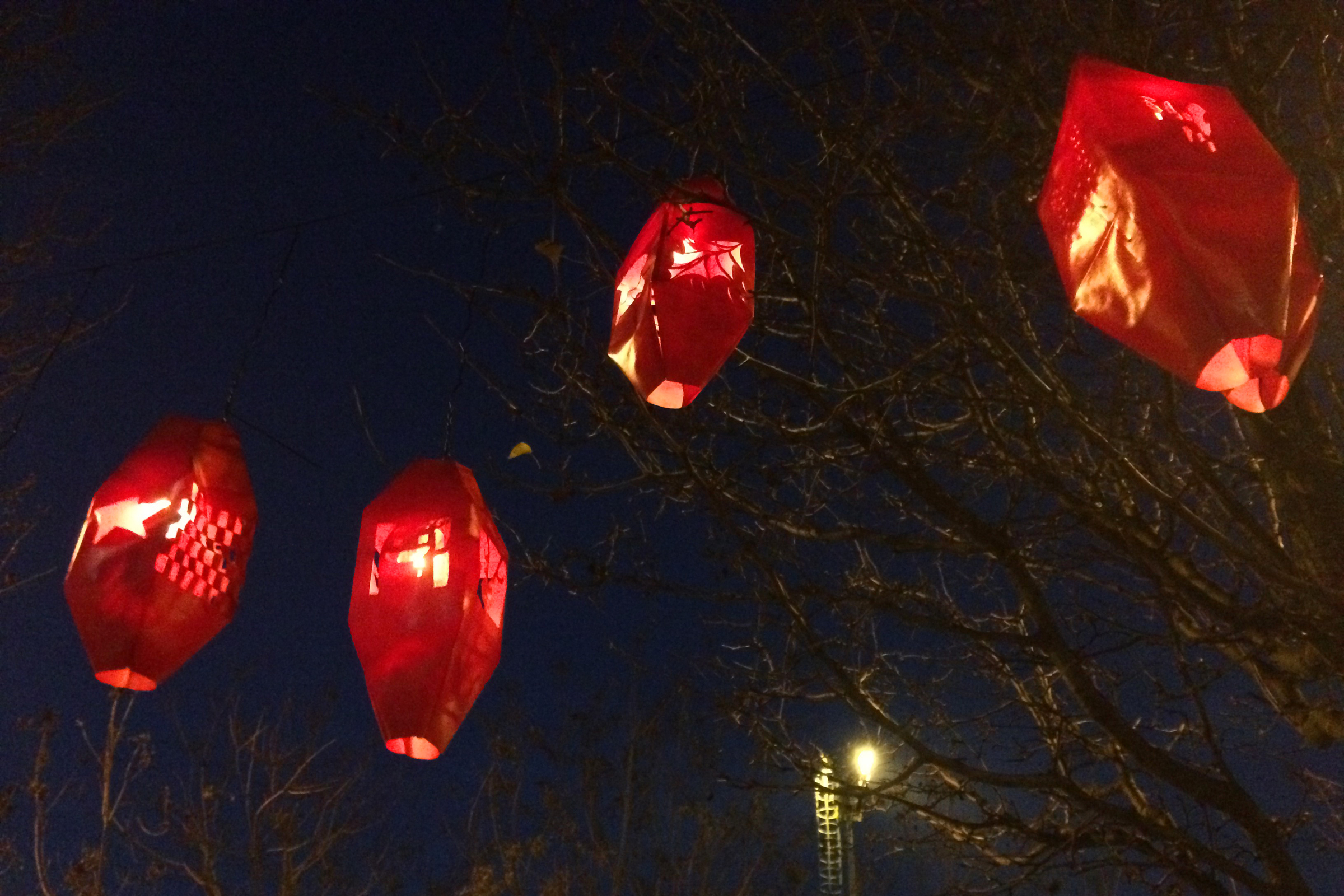Facciamo luce
design sociale, installazione,
design per bambini
laboratori,
50 lanterne,
2016, Reggio Emilia
“La novità è la ripresa della centralità del rapporto tra corpi urbani e spazi urbani, una ripresa tutta politica, anzi si può dire che la politica è proprio questo, il diritto a esercitare la propria presenza negli spazi pubblici di una città, un gesto e una pratica che rimette in ballo la fisicità della città e dei suoi cittadini.”
Franco La Cecla, Contro l’urbanistica
Il quartiere della stazione, che ospita Piazza Domenica Secchi, è situato in una zona strategica della città: a due passi dal centro e da Piazzale Europa che ospita il Centro Internazionale Loris Malaguzzi e il polo Tecnologico sito nelle ex Officine Reggiane. Qui negli anni, a causa di speculazioni immobiliari, sono state concentrate le minoranze sociali e i problemi.
Il progetto è nato come tentativo di restituire alla comunità protagonismo nella gestione degli spazi pubblici. Per sperimentare questa nuova pratica, è stato selezionato il periodo natalizio. Così abbiamo deciso di progettare e co-realizzare due installazioni pubbliche, che avrebbero illuminato la piazza principale del quartiere, durante il periodo festivo.
Facciamo luce nasce invece da una serie di laboratori che hanno visto la partecipazione di bambini e adolescenti del quartiere (in maggioranza cinesi e nordafricani) per la realizzazione e l’installazione di lanterne di carta.
Le lanterne sono state realizzate con la tecnica degli origami; ogni lanterna è unica e porta su di sè la traccia personale di chi l’ha prodotta.
Lo scopo dei laboratori è stato quello di coinvolgere i ragazzi nella presa in carico della decorazione di un luogo pubblico, attraverso la realizzazione di un’installazione collettiva, che è stata ultimata e allestita il 21 Dicembre 2016. Facciamo luce è rimasta accesa fino al termine dei festeggiamenti del Capodanno cinese, un piccolo gesto di vicinanza alla comunità cinese residente nel quartiere.
“The novelty is a recovery of the important relationship between urban bodies and urban spaces, which is a political recovery, in fact we could say that politics is just that, the right to exercise one’s presence in the public spaces of a city, a gesture and a practice that rediscovers the physical reality of the city and its citizens.”
Franco La Cecla, Against urban planning
The district around the railway station, where Domenica Secchi square is located, represents a strategic area of the city: it is at a walking distance from the historical center and from Piazzale Europa, which houses the Loris Malaguzzi International Center and the Technological Center based in the former Officine Reggiane’s complex.
Due to real estate speculation this area has become, over the years, an aggregating center for the city’s social minorities and their problems.
The project was born in collaboration with the municipal administration of Reggio Emilia, as an attempt to involve the community in the management of public spaces. For the launch of the program we chose the Christmas period, and decided to design and co-realize two public installations which would illuminate the main square of the neighborhood during the festive period.
Facciamo luce comes from a series of workshops which involved the teenagers of the neighborhood (mostly Chinese and North African) in the construction and installation of paper lanterns.
The lanterns were made with the origami technique; each lantern is unique and carries on itself the personal signature of those who produced it. The aim of the workshops was to engage the youth in taking charge of the decoration of a public place, by participating in the realization of this collective installation which was completed and set up on December 21st, 2016.
Facciamo luce was active until the end of the Chinese New Year, a small gesture of friendship and acknowledgment towards the Chinese community living in the neighborhood.
Credits
“Facciamo luce” è un progetto di Materia Critica.
È stato realizzato in collaborazione con Accqua – Accademia di Quartiere, Spazio Raga e il Comune di Reggio Emilia.






